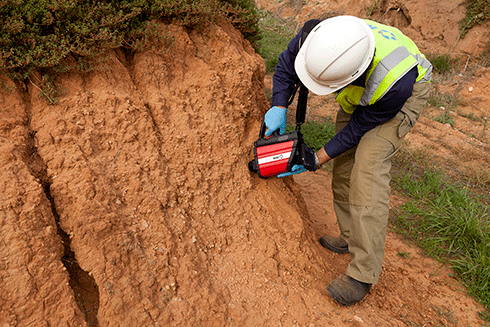
|
Published: 26 May 2014
Australian device could help US clean up contamination faster and at less cost
A handheld detector that reduces both the cost and time taken to remediate sites contaminated by petroleum products is being launched on the US market.

|
|
Users just pull a trigger on the RemScan™ to generate a reading in 15-20 seconds, enabling hundreds of readings to be taken from a site in a day. Credit: CSIRO
|
Petroleum contamination is a widespread global issue with recent events like the Gulf of Mexico oil spill attracting attention from communities in the US concerned about the health and environmental impacts of such spills on nearby beaches, wetlands and other areas.
The traditional method for measuring petroleum contamination involves sending soil samples to a laboratory and waiting several days for the results.
The handheld RemScan™ device, developed by CSIRO and industry partner Ziltek Pty Ltd, uses an infrared signal to directly measure petroleum hydrocarbons in the soil.
The user simply pulls the trigger to generate a reading in 15-20 seconds. This means hundreds of readings can be taken from a site in a day, allowing for faster clean up decisions and significant cost savings.
RemScan™ also decreases the number of samples that require laboratory analysis, resulting in further cost reductions. It is particularly suited to remote areas, where laboratory analysis is either not available or is prohibitively expensive.
According to Ziltek , a South Australian-based waste remediation company, accidential petroleum spills within the Australian mining and minerals sector divert costly resources from core business.
Ziltek claims RemScan™ can cut the cost of soil petroleum analysis for an average mid-size remediation firm in Australia by up to 50 per cent.
Source: CSIRO



